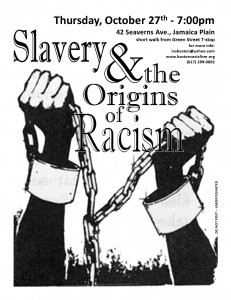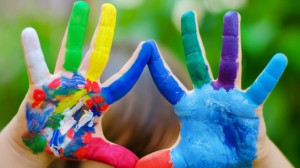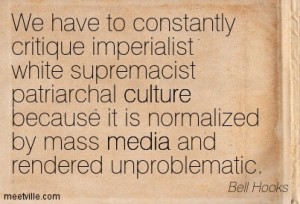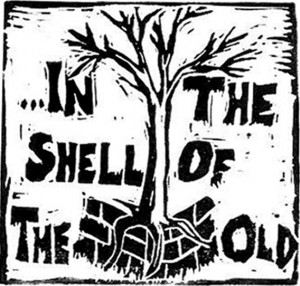Beyond White Privilege: Witnessing Whiteness for White People
by Carolyn Griffeth
In the wake of the Mike Brown shooting and Ferguson uprising, much has been written for white folks to better understand the pervasiveness and impact white privilege. One of the fundamental ideas of of white privilege is the reality that whiteness is a distinct and created culture in the US. This article offers some helpful insights, laying out some of the patterns and “scripts” that go along with white culture.
* Note: This article is of course for everyone but was particularly written so that people of color can take a break from trying to helping whites to see the stuff they need to work on.
Whiteness is something real. It is a set of patterns (limited ways of relating), as well as the values and beliefs that mark white culture. Sometimes we call these values American, but don’t let that fool you, they are white values, which were historically promoted to support capitalism and the myth of white superiority.
There was a time in US history when both African and European bond laborers were treated somewhat similarly and few Europeans would have identified as white. This changed in the late 1600’s after Bacon’s rebellion in which laboring class workers free and bonded, both African and European, joined together to fight for greater rights. Realizing the threat this solidarity posed to the owning class, new legal protections and rights where created for all “whites” – both free and bonded. Other laws followed that continued to eliminate the rights of non-whites, such at the 1691 law forbidding owners from setting African slaves free. 
Through minstrel shows and many other means, there also began a white superiority campaign (which arguably continues today) denigrating black and Native American culture as dirty, lazy, communal , superstitious, and sexually immoral; and uplifting white culture as hardworking, ambitious, driven by reason, virtuous, and blessed. Immigrants were given a stark choice: to be recognized as white and gain privileged status, or to be considered “other” or black and lose rights and status. Not surprising, Irish and Italians alike chose the path of whiteness, but at great cost: cultural practices and beliefs that conflicted with whiteness were gradually lost, particularly the communal spirit.
Today, whether your family linage is French or Swedish, if you’ve been raised in the US, your culture is whiteness. This is even more so for those who were raised middle class. But what is whiteness? For those of us that have grown up in the Midwest, noticing whiteness can be much like hearing a Midwest accent. Hard isn’t it? Similarly, whiteness has been normalized within our culture. Those that have been raised within it can’t see it.
Recently the St. Louis Catholic Worker community began a study group using the book Witnessing Whiteness by Shelly Tochluk, which helps white folks look at whiteness. This process has been like a long, hard look in the mirror. The white patterns highlighted in the book, such as emotional superficiality and avoidance of conflict are alive among us, preventing us from going deeper in our relationships. How can we be real, when we fear isolation and loss of connection? It was an epiphany to realize that the desire to recover from the blandness, isolation, and meaninglessness of white culture is often what drew us to community. We also noticed how specific white patterns lived on in community and continued to drive us apart: perfectionism, criticism, the need to be exceptional/superior, and playing the savior. No wonder we often have a hard time attracting people of color to join us! 
It is helpful to notice that none of us chose these ways of relating; the patterns are something that happened to us. Whiteness is perpetuated through white conditioning: certain values and behaviors are taught and rewarded while others are denigrated and discouraged. You might be thinking: “So what? This kind of conditioning happens in all cultures. Why is it so important to notice whiteness?”
The reason is simple: Because just acting like a normal white person can play out as racism in our relationships with people of color. This is due to the all pervasive reality of racism in our society: people of color have witnessed so many acts of racism, that racism necessarily frames the way “patterned” behavior on the part of whites is interpreted.
Let me share an example: I was speedily walking from my house to Karen house one day with my mind on my to-do list, and I raced right by an African American neighbor and her friend, who I hardly noticed. My neighbor’s friend did notice me though, and practically snorted in the air at my rude behavior. This stopped me in my tracks and caused me to turn towards the women I had passed. The look on their faces made it clear that they experienced my behavior as aloof, superior and, simply put, racist. Greatly embarrassed, I stopped and apologized. I was grateful to see how my pattern of being preoccupied was playing out as racism.
 A similar thing has sometimes happened when I have to wait in a long line at the grocery store. I feel so entitled to quick service, that if I don’t catch myself I am likely to be cold and impatient with those at the register, who are often African American. By not keeping my white conditioning in check, I act like an entitled, racist white woman. The fact that I would have acted just the same with a white worker does not matter.
A similar thing has sometimes happened when I have to wait in a long line at the grocery store. I feel so entitled to quick service, that if I don’t catch myself I am likely to be cold and impatient with those at the register, who are often African American. By not keeping my white conditioning in check, I act like an entitled, racist white woman. The fact that I would have acted just the same with a white worker does not matter.
I wish I could say that these are the only times I acted in unconsciously racist ways. Unfortunately, they are not. Since reading Witnessing Whiteness I have looked back on many moments in my life and noticed how acting out white patterns led me to either fail to build deep relationships with people of color, or act as an ally when participating in groups led by African Americans in particular.
This is not what I want for my life and I imagine it is not what you want for yours either. To foster self-awareness amongst white people, I’ve put together a list of white patterns. (see “Patterns of White Culture” later in this packet) For each, I could come up with an embarrassing example from my own life, but I thought it would be more useful for you to try to come up with an example from your own!
When you look at this list you are likely to chuckle. Much of it should seem familiar: these values and behaviors are not just what alienates whites from people of color; they are also that which separates us from one another, and which makes white-dominant groups often not all that supportive and fun. Understanding whiteness is not only essential to the work of eliminating racism, but also to forming close relationships with other white people, and to recovering the fullness of our humanity. We need not settle for the roles and values handed to us as white people, or for the disconnected lives that come with. Instead, we can challenge these unproductive patterns of behavior beginning with ourselves, and draw near to other white people as they do the same. When we drop the patterns of blaming ourselves and criticizing others, it can even be fun. Trust me!
Some Tendencies of White Culture… 
Compiled by Carolyn Griffeth from Witnessing Whiteness and Re-evaluation Counseling Materials
Isolation: At the heart of whiteness is the feeling of isolation which is rooted in family life where there little closeness and sense of inherent belonging. We develop many strategies/identities to make up for this lack of felt belonging. Many of us continue to live isolated, racially segregated lives.
Grasping for identity: Either co-opting ethnic identities not our own or using our relationships with people of color to create an identity for ourselves.
Savior identity: Playing the helper/savior role to feel better about ourselves. “I’ve sacrificed so much in solidarity with the poor.”
Making everything about yourself/ your statement/ your identity: Subverting the collective to make your own political statement or to attract more attention to yourself. “What should I wear to the protest?”
Superiority mentality: I know just what these people need to do to improve their situation! Assuming you’re the expert, not coming as a learner.
Critical patterns: Seeing the worst in others, criticizing. Critiquing everything. Creates a lack of safety and the paralysis of analysis.
Better than/ Not as good as: Continually making comparisons and rankings. Creates  disconnection and makes everyone feel bad.
disconnection and makes everyone feel bad.
Acting and leading in dominating ways: Not getting behind the leadership of others particularly people of color. Believing your perspective is the only perspective. Speaking first and taking up too much space.
Ambition is everything: Belief that one should be personally driven and autonomous—not constrained by the needs of family or community. Wanting to see the under-privileged kid go away to college.
Belief in meritocracy: “Anyone can become anything if they try hard enough.” Even if we know this is baloney, we still often unconsciously judge ourselves and others by this myth. Ignorance of privilege.
Belief that I must be exceptional to be acceptable: This drives all kinds of over-achiever/perfectionist/competitive patterns that separate white people from one another and lead us to be driven, disconnected, and to feel bad about ourselves. This is the message given to those raised middle class.
Valuing of reason over relationship and emotions: Reducing discussions of issues to facts and figures rather than caring and connection. Talking like the expert. Particularly common for white men. 
Emotional superficiality. Pretending everything is great and therefore not really engaging or showing ourselves. Artificiality and pretense.
Conflict avoidance which undermines our relationships. Making a big deal of it if anyone challenges us or disagrees.
Entitlement and greed: Expecting to be welcome/included in all groups/cultures/countries. Expecting the best service, the best in everything despite the cost to others. Can lead to rudeness.
Not knowing how to just hang out, be natural. Not taking the time to have a conversation with your neighbors or to build relationships with people in a coalition.
Reflection Questions
If you are white, which of these tendencies resonate with you? If you are not white, how have you experienced these dynamics?
How have they influenced you or your relationships?
What effect do these characteristics – held by the dominant group – have on society as a whole?